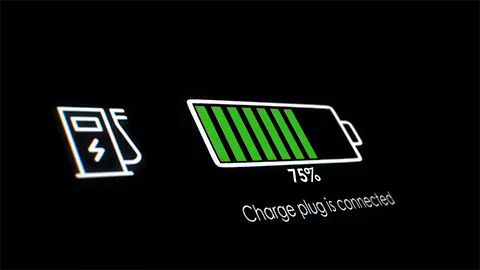Maintaining Your EV Battery
While your smartphone may be outdated in a few years, an EV is built to last for a good 15 years and the battery pack will last even longer. Think of your EV battery as a storage device for a huge amount of energy. It sends electricity to power the motor and accessories. Its maintenance is extremely important.
A Word About Charging
There are three ways to charge your EV. Level 1 charging allows you to plug your car into any standard 120-volt electric outlet (just like plugging in your toaster or blender). Level 1 charging takes about 12 hours to fully charger your electric car. Level 2 charging uses a 220-volt charger and outlet. Your home clothes dryer uses 220 current. A Level 2 charger can be installed by an electrician right in your garage and it will cut your charging time in half! Level 3 charging is also called DC Fast Charging and is available at public EV chargers for rapid charging. It uses 480-volt direct current and you can get an 80 percent charge in about a half hour.
EV batteries do not require any special maintenance. In fact, they are generally maintenance-free! You will probably never even come into direct contact with your EV battery pack. In general, electric cars require less maintenance overall than a traditional gasoline-powered vehicle because there is no oil to change and nothing to tune up. The brakes even last longer because regenerative braking uses the electric motor to slow you down, saving wear on braking components.
However, how long your EV battery will last depends on how you charge it over time. There are some do’s and don’ts. It all comes down to being responsible on how you use the battery.
EV Battery Maintenance
It is best to never charge your EV battery over 80 percent. Charging happens in such a way as to put stress on the battery pack the closer you are to a 100 percent charge. Adding that final 20 percent will tax the battery. New EVs allow you to set a charging maximum to help you preserve battery life.
Likewise, never let your battery discharge all the way down to zero percent of charge. That is equally distressing to the battery and components. Most EVs have a “limp home mode” that will allow low speed driving to get you back to your home charger.
It is perfectly okay to use a DC Fast Charger when you are on a trip and want to recharge your EV in a half hour. But automakers suggest it is best not to use Level 3 charging on a daily basis. It is far better to charge your EV overnight while you’re sleeping and have a full tank of electricity the next morning by using Level 1 or Level 2 charging.
Weather Worries
When it comes to the outside temperature, your EV likes it to be temperate, just like you do. If it is too hot or too cold outside, your EV’s battery will complain. Extended exposure to extreme temperatures will reduce how many miles you will get on a charge. In very cold weather, your car’s range may be reduced by as much as 40 percent! With that in mind, try to keep your car in the garage when possible, to avoid freezing or scalding temps.
Battery Degradation
You may have noticed that as your cellphone gets old, it tends to need to be charged more frequently. That is called “battery degradation.” Over the life of your electric car, the battery may degrade to a small degree but not enough to be replaced. It is normal to experience a five percent loss of range per 100,000 miles of travel.
The bottom line is to limit the time you use DC Fast Chargers, keep your vehicle at a moderate temperature to get the most out of your battery, and it is also a good idea to accelerate moderately. Being a lead foot can add stress to the components and reduce the life of your battery.

















